Age
Age Milestones For 3-5 Years

Physical: Overview (3-5 Years)
Children continue to develop their fine motor skills between years 3 and 5. Most learn to draw shapes and people,

Becomes Primarily Left-Handed or Right-Handed (38-48 Months)
Most infants show no clear hand preference (left- or right-handedness) in their early years. Instead, many seem to alternate between

Capable of Standing on One Foot for Up to Five Seconds (39-47 Months)
By age 3, preschoolers have developed large motor skills enough to participate in organized games and some sports. They are now

Capable of Using Scissors with Some Dexterity (40-48 Months)
Children develop muscular control and concentration to master some precise hand and finger movements during their fourth year of life.

Goes Up and Down Stairs without Support (40-48 Months)
By age 3, preschoolers have developed the large motor skills to control and direct many of their movements. Many are

May Begin to Copy Some Capital Letters (41-48 Months)
At this age, children are developing both muscle control and concentration that will help them master more challenging finger and

Draws a Person with Two to Four Body Parts (41-50 Months)
Children develop muscular control and concentration to master some precise hand and finger movements during their fourth year of life. Most

Can Throw a Ball Overhand (42-49 Months)
By age 3, preschoolers have developed large motor skills enough to participate in organized games and some sports. Many are

Can Move Forward and Backward with Ease (42-51 Months)
By age 3, preschoolers have well-developed large motor skills. When learning to walk, most toddlers have difficulty moving backward. At

Copies Triangles, Squares, and Other Geometric Patterns (49-60 Months)
During their fifth year of life, preschoolers’ coordination and ability to use their hands is almost fully developed, and they

Capable of Dressing and Undressing without Assistance (50-60 Months)
During their fifth year of life, preschoolers’ coordination and ability to use their hands is almost fully developed, and they

Hops, Somersaults, Swings, and Climbs (51-59 Months)
Four-year-olds have the coordination and balance of adults and demonstrate their skills by descending stairs without the handrail, standing on

Stands on One Foot for Ten Seconds or Longer (52-58 Months)
Four-year-olds have the coordination and balance of adults and can stand on one foot for ten seconds or longer. They

Draws a Person with Body, Some Details (53-57 Months)
During their fifth year of life, preschoolers’ coordination and ability to use their hands is almost fully developed, and they

Social and Emotional: Overview (3-5 Years)
“I want to do it myself!” Children are becoming increasingly independent between ages 3 and 5. They are also taking

Capable of Dressing and Undressing Self (36-48 Months)
Coordination and the ability to use their hands are almost fully developed by age 4, and preschoolers are gradually learning

Demonstrates an Increasing Ability to Share (36-48 Months)
Although sharing is a foreign concept for toddlers, many preschoolers are gaining an understanding of and appreciation for the feelings
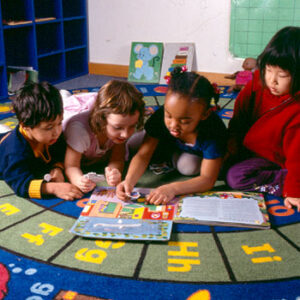
Cooperates More with Other Children (36-50 Months)
Preschoolers enjoy the company of other children and interact with them instead of playing side by side like they did

Five Steps of Emotion Coaching
Emotions…we all have them. Everything we do and everything we learn is shaped in some way by the way we
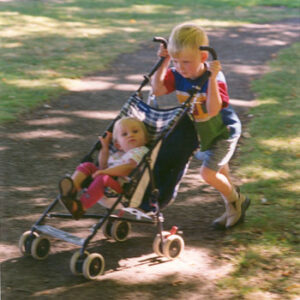
Shows Increasingly Independent Behaviors (36-51 Months)
Preschoolers are becoming increasingly independent and want to make more of their own choices. Eager to prove how capable and
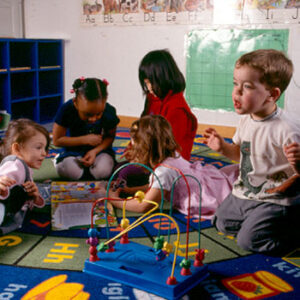
Begins to Negotiate Solutions to Conflicts (38-48 Months)
As children gain an understanding of and appreciation for the feelings and actions of others, they will gradually stop competing

Views Self as a Whole Person–Body, Mind, and Feelings (40-49 Months)
Three-year-olds are gradually learning to use pronouns such as “I,” “me,” “mine,” and “you.” Although they’re still struggling to comprehend
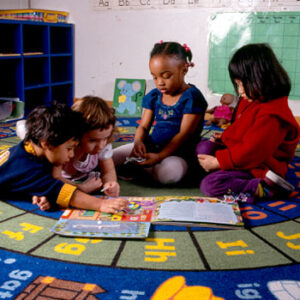
More Likely to Agree to Rules (48-59 Months)
Children still have a simplified sense of morality as they approach their fifth birthdays, but they are exploring the concepts

Wants to Please Friends (49-59 Months)
For 4-year-olds, friends aren’t just playmates – they’re examples of different behaviors, values, and ways of life. Preschoolers want to invite
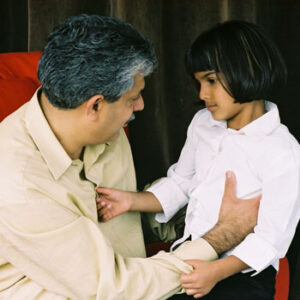
Sometimes Demanding, Sometimes Eagerly Cooperative (50-60 Months)
Preschoolers gain more control over their unpredictable emotional responses by age 4, but they’re still struggling to manage their feelings

Cognitive and Learning: Overview (3-5 Years)
Between three and five, children become more sophisticated thinkers. They have a clearer sense of time, they can count objects

Increasingly Inventive Fantasy Play (36-48 Months)
Preschoolers enjoy vivid fantasy lives and imagine themselves in various roles, from firefighters and dancers to doctors and superheroes. Taking on

Story Time: Helpful Skills for Pre-Literacy
Sharing books is a great way to help your child learn to read and write. But there is something just

Tell Me a Story
Stories are a great way to connect! “That’s a picture of Grammy when she was a little girl. She loved

Capable of Approaching Problems from a Single Perspective (38-50 Months)
When faced with specific challenges, three-year-olds approach problems from a single perspective. They haven’t yet developed the ability to see

Gone Fishing: Understanding that Written Language Carries Meaning
Beginning at an early age, many children begin trying to understand the signs, labels, logos, and printed words they see

Capable of Verbal Knowledge of a Few Numbers (39-48 Months)
Preschoolers understand the concept of counting and may know a few numbers by the end of their second year. References:

Can Correctly Name Some Colors (40-48 Months)
Although children can distinguish among colors at an earlier age and may learn color words, they may not consistently name

Learns to Count Objects Accurately (40-49 Months)
Once children begin to talk, counting soon follows. At first, this counting is not very precise, and the words for

Begins to Have a Clearer Sense of Time (42-50 Months)
Children develop a much clearer sense of time at about 3 years of age. They know their daily routines and show
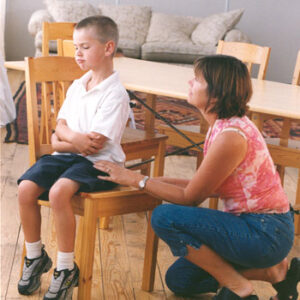
Becomes Capable of Deliberate Lying (46-53 Months)
When children develop the ability to deceive others is somewhat controversial. Although some researchers believe children can be deceptive by

Realizes Other People Can Have Inaccurate Perceptions of the World (48-57 Months)
Children gain new insights into how other minds work between ages 4 and 5. Part of this understanding includes realizing

Shows Increased Sophistication in Understanding the Concept of Time (49-59 Months)
Preschoolers understand that days are divided into mornings, afternoons, and nights and that years consist of four seasons. When they

Realizes that People May Have Different Visual Views of the Same Object (50-58 Months)
Before children are about 4 years old, they don’t understand that their view of an object and someone else’s view

Language and Communication: Overview (3-5 Years)
It’s storytime! By age 5, most children can communicate effectively, and many enjoy telling creative stories. Their sentences get longer

Can Ask a Grammatically Correct Question (35-41 Months)
Before age 3, children’s questions are generally incomplete, depending on words like “where” or “what” and a rising tone at

Inserts Articles, Auxiliary Verbs, and Grammar Not Previously Seen (37-44 Months)
In the third year, children use language in increasingly sophisticated ways. This includes making sentences that use articles (“a” or

Understands the Concept of “Same” and “Different” (39-48 Months)
During their fourth year, children begin to compare things in terms of similarities and differences. This is an important analytical
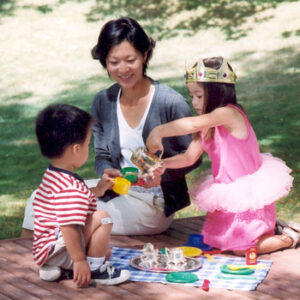
Capable of Speaking in Sentences of Five to Six Words (40-48 Months)
At age 3, most children have active vocabularies of 300 or more words, talk in sentences of five or six

Speaks in Complex Sentences (51-59 Months)
Language skills blossom around age 4, and preschoolers can now pronounce most sounds of the English language. Their vocabularies expand to
